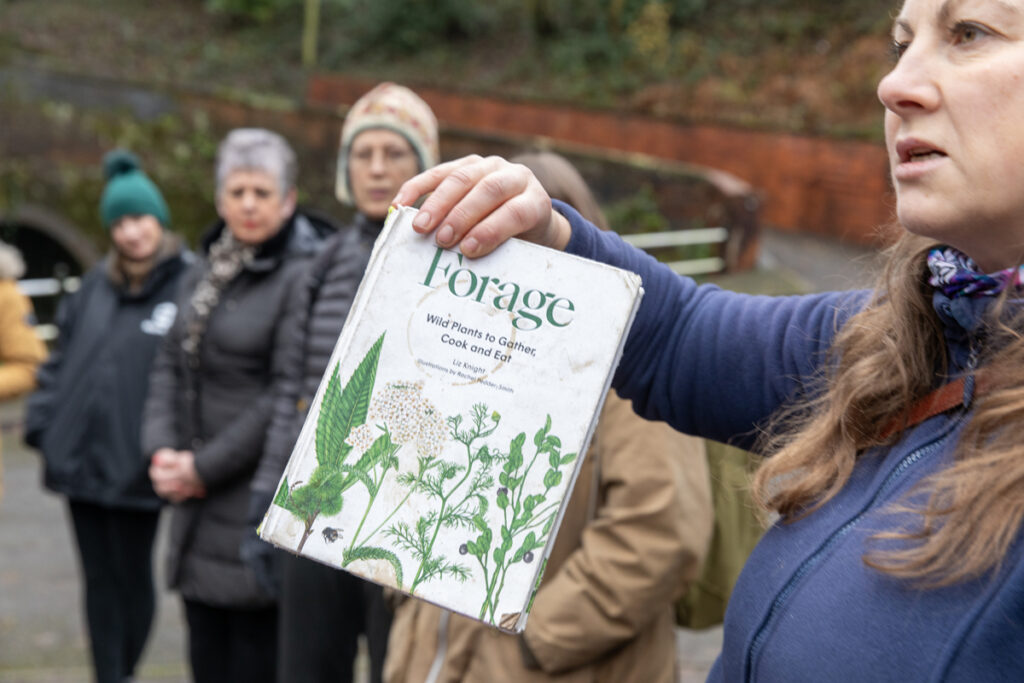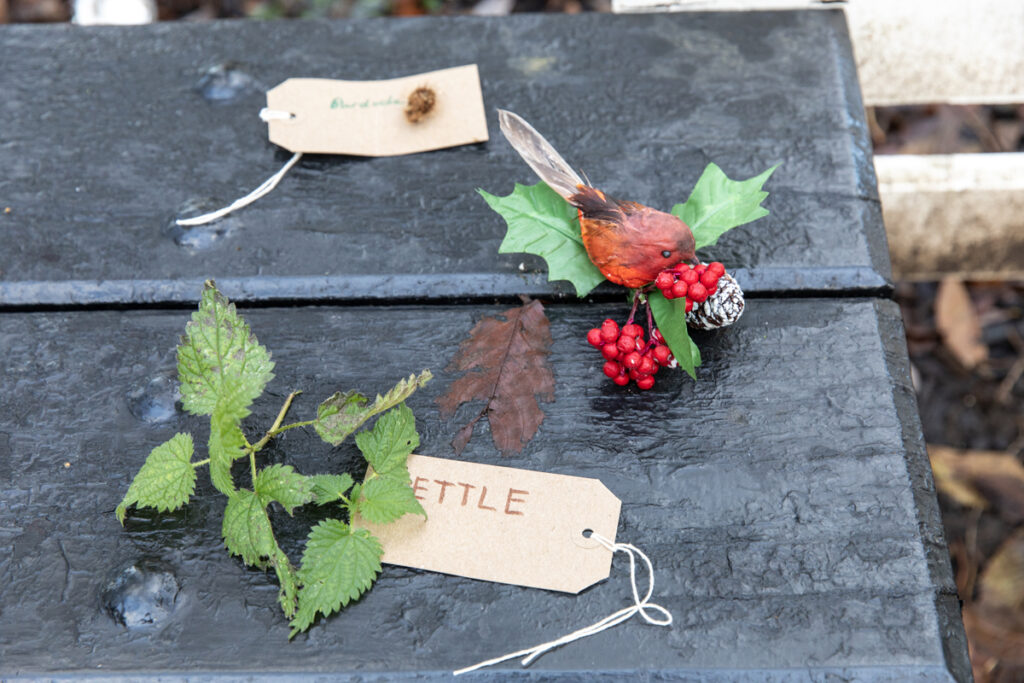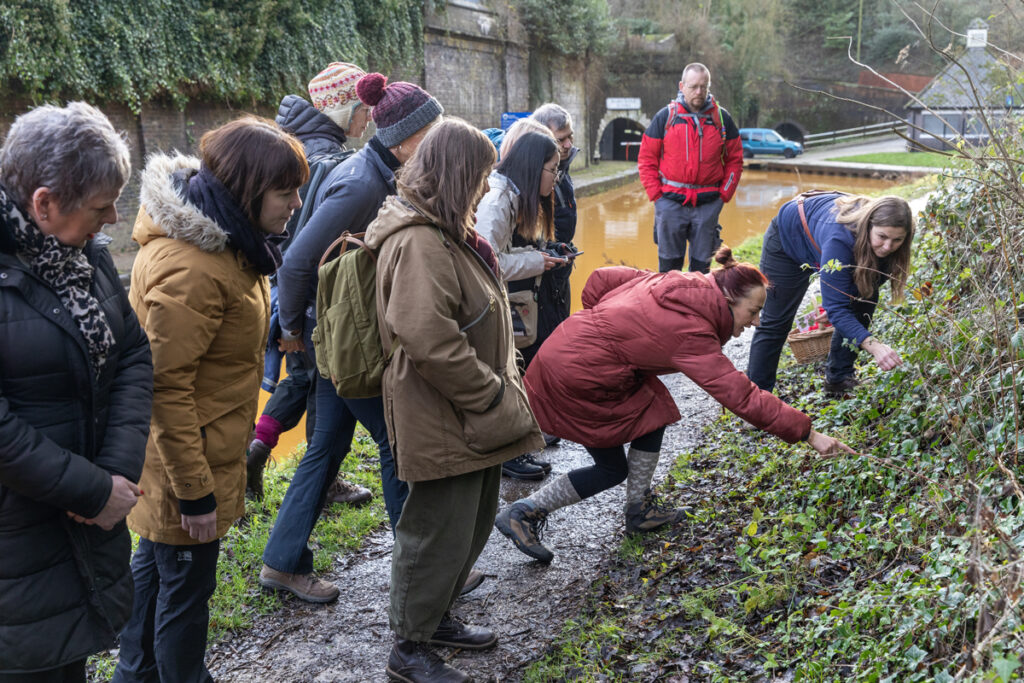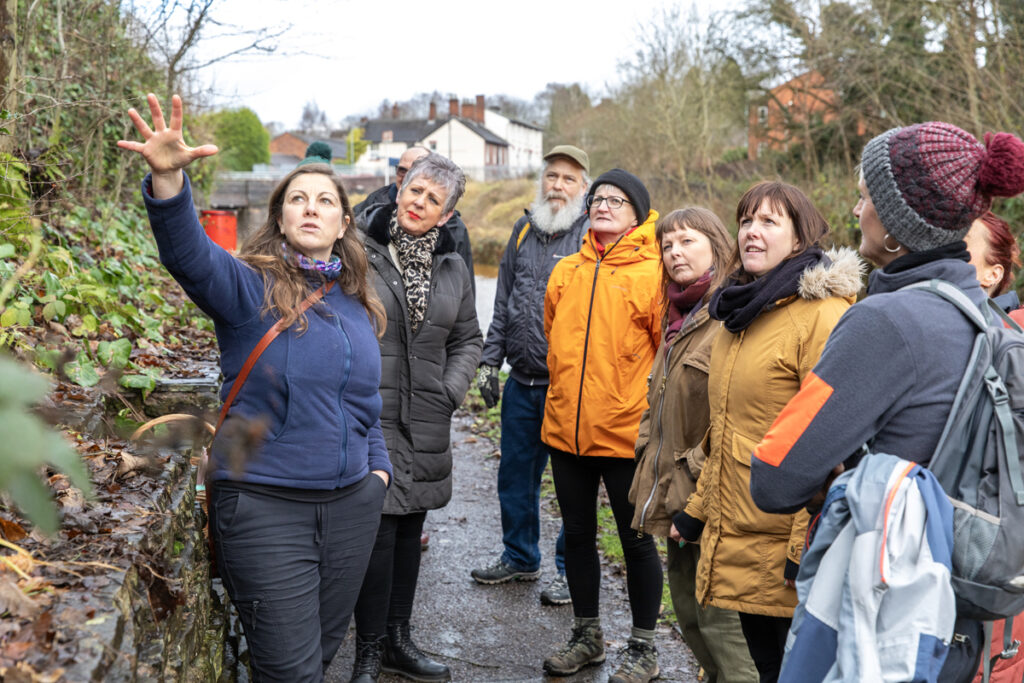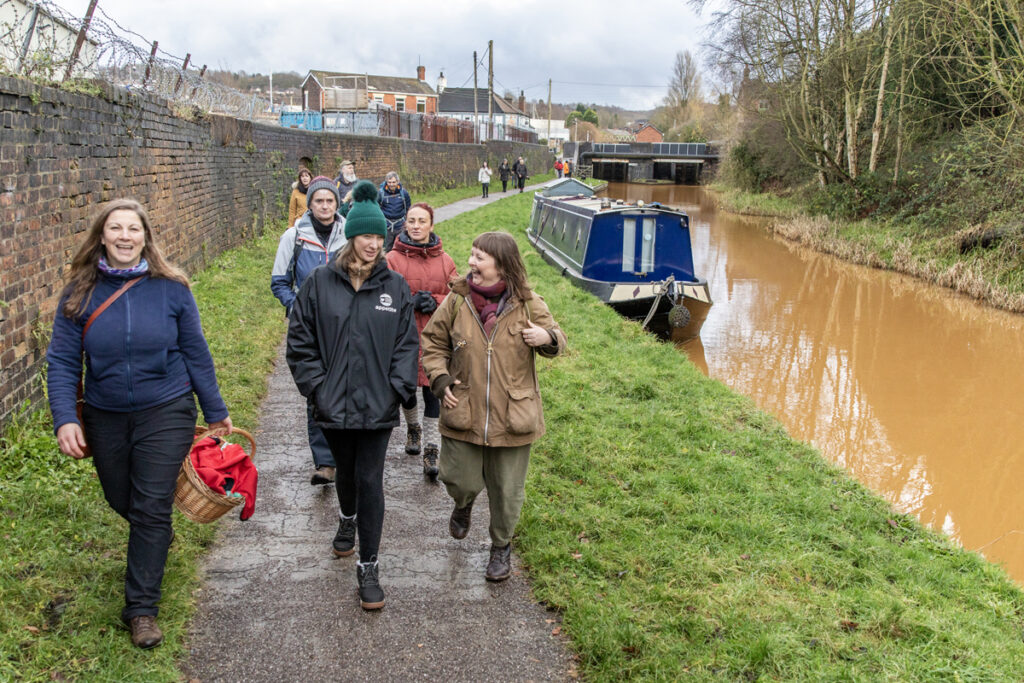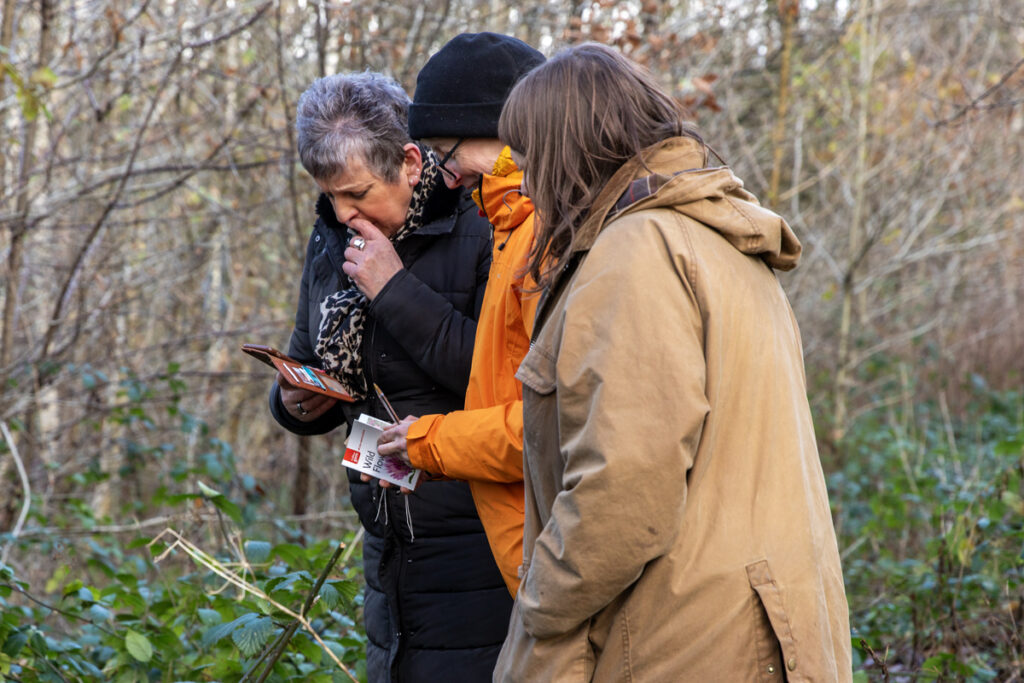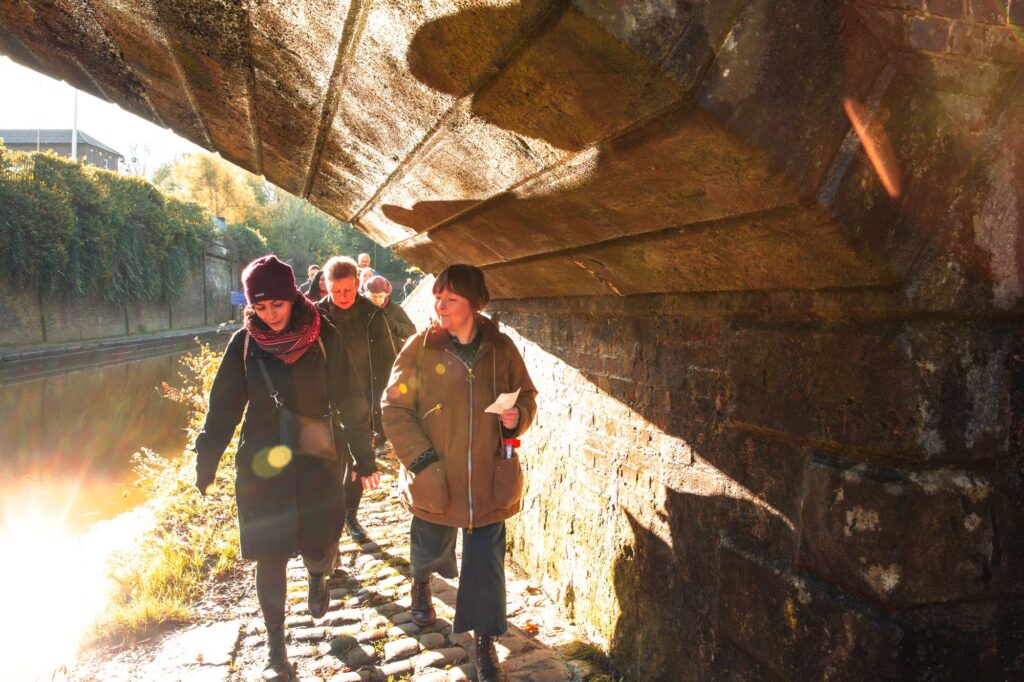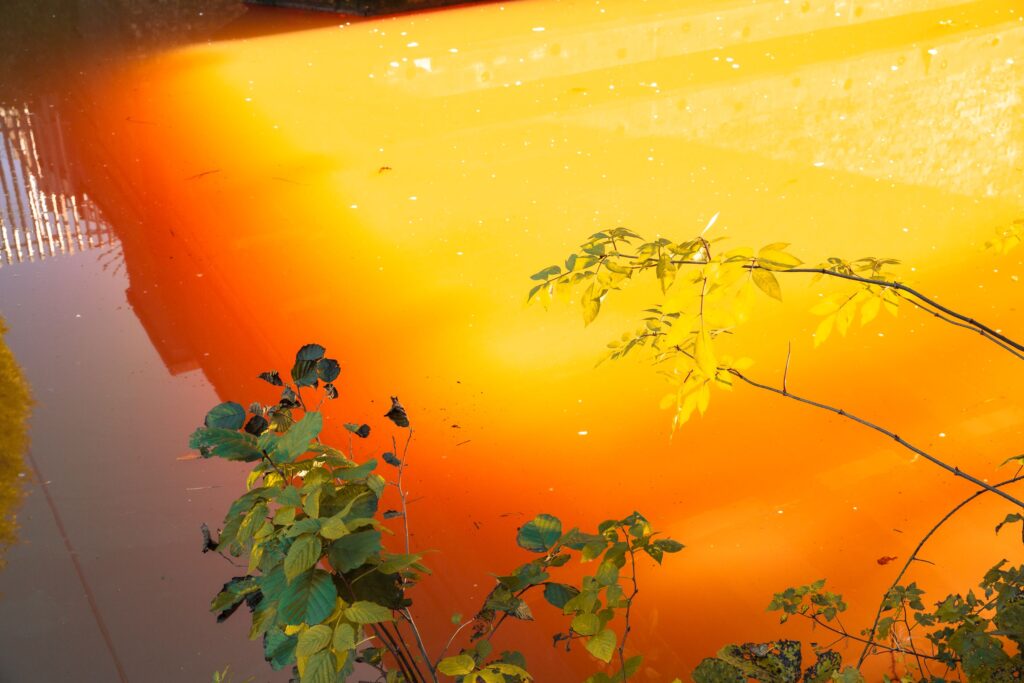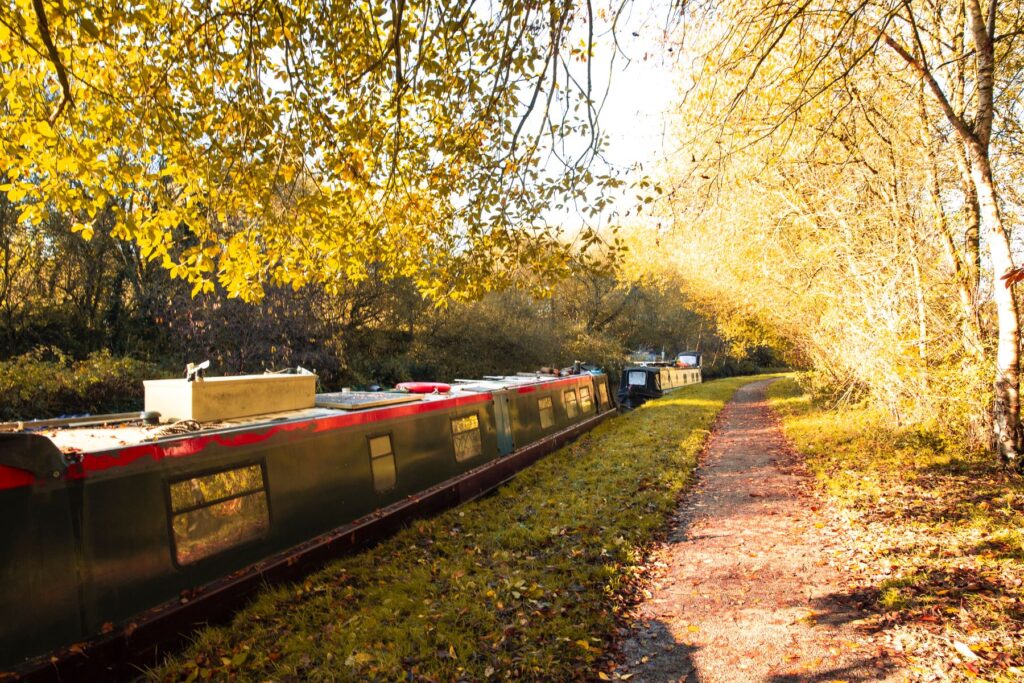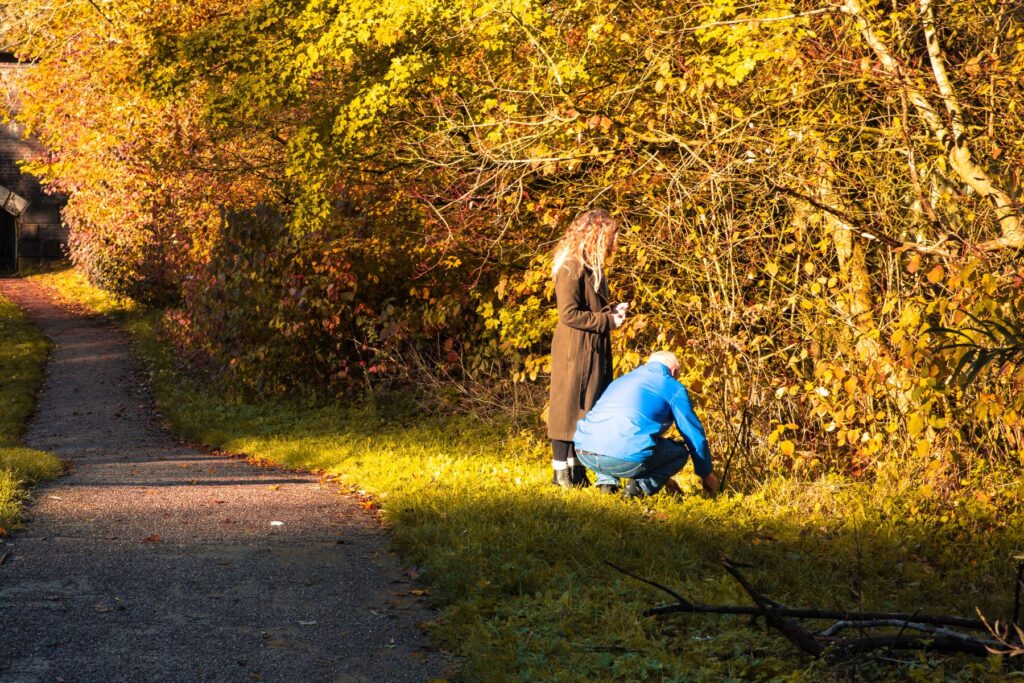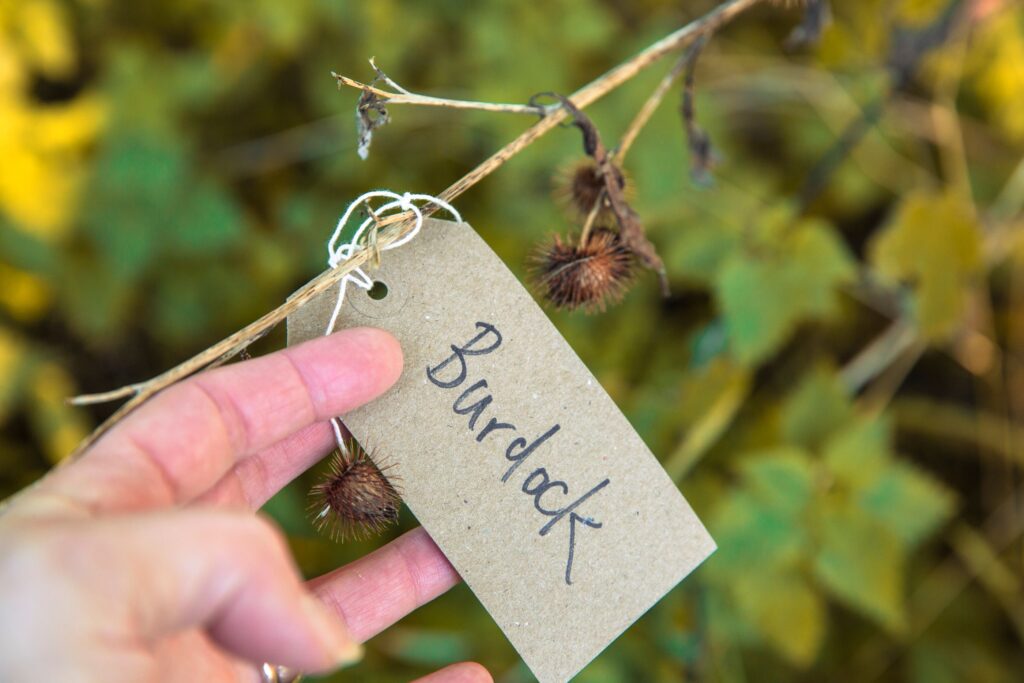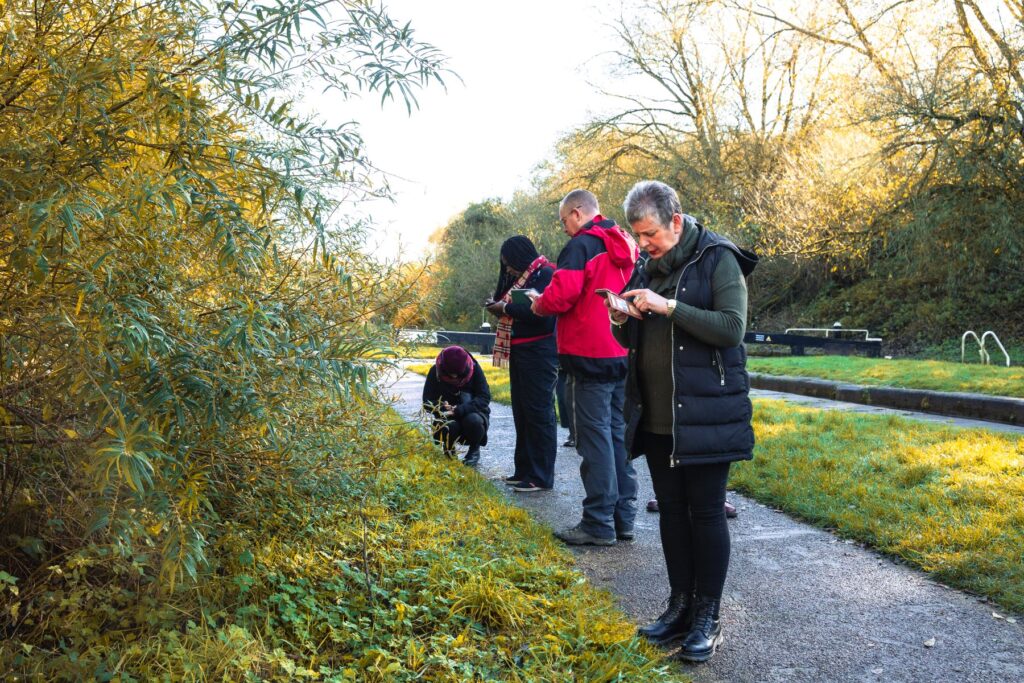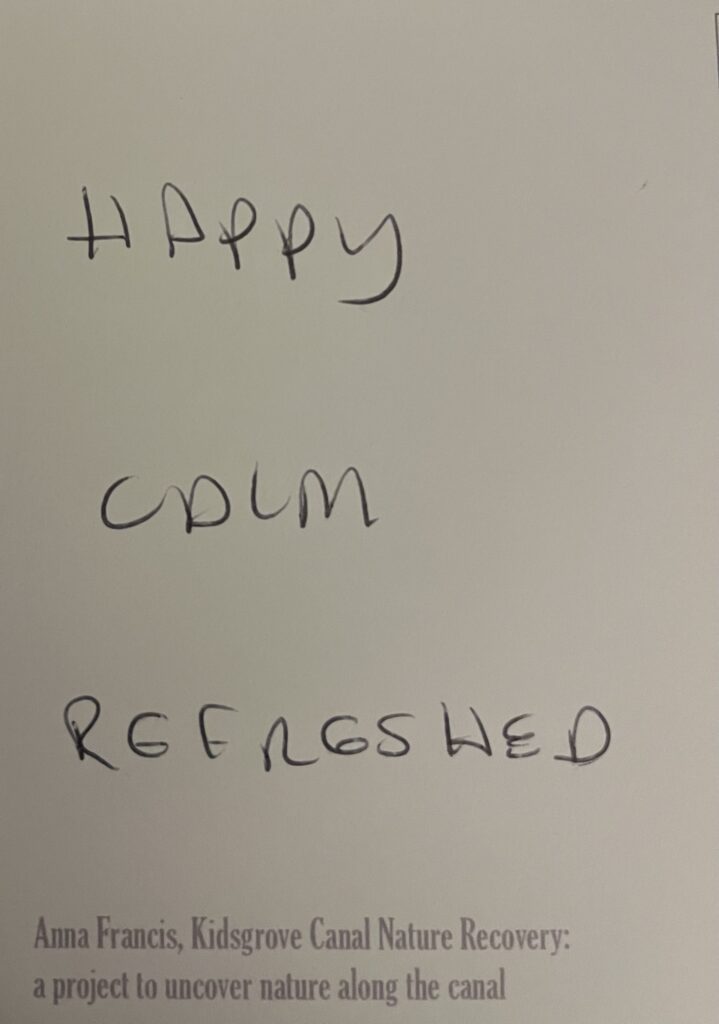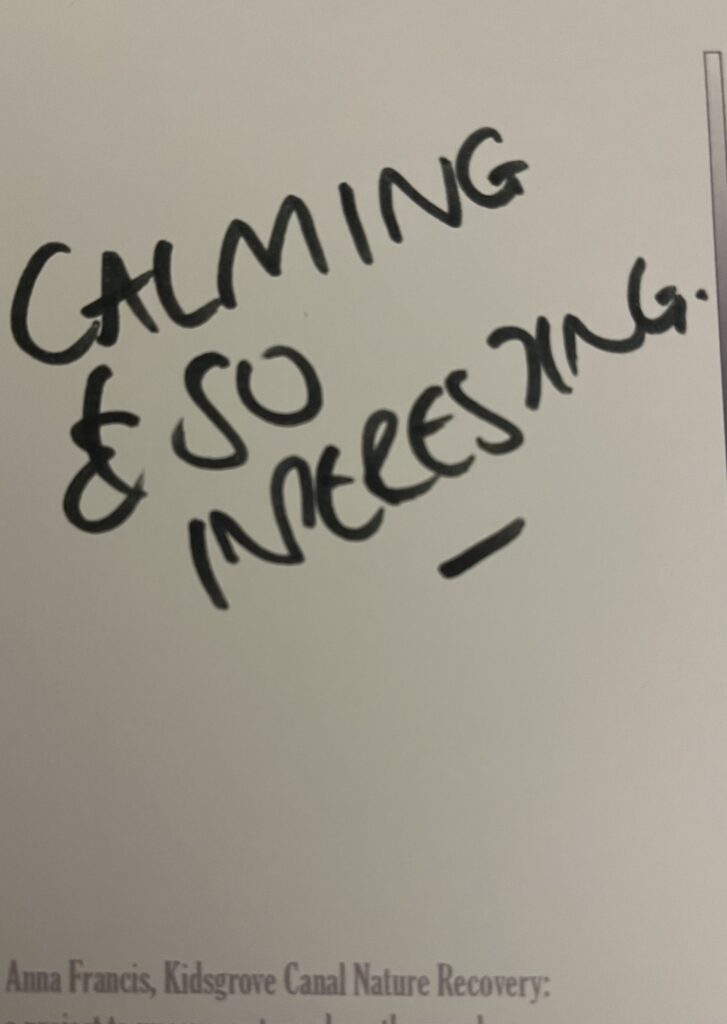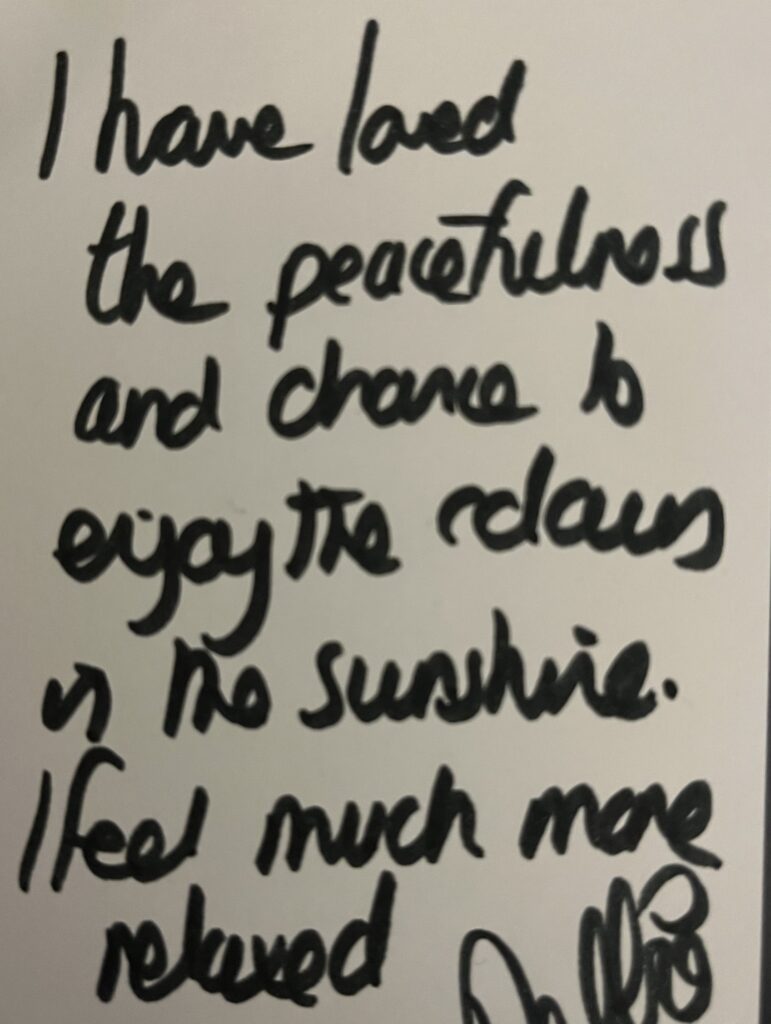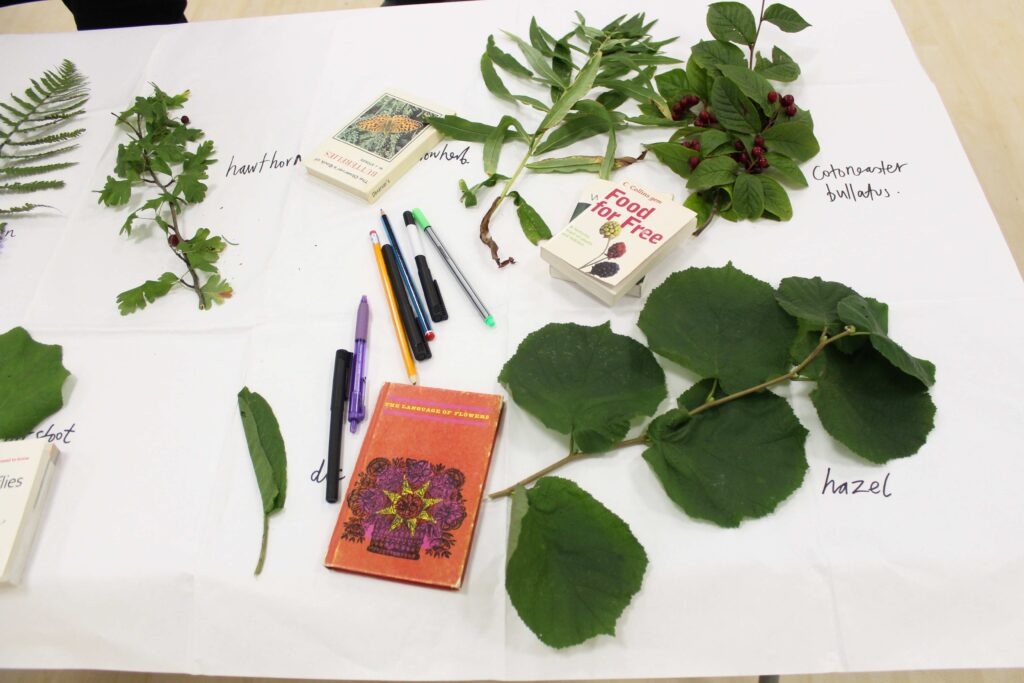Join us for more walks among nature
Due to the incredible response from the Kidsgrove community during the Kidsgrove Canal Nature Recovery walk series that took place over winter and early spring, they are set to make a return in June. Appetite are once more partnering with artist Anna Francis and Canal & River Trust to bring more nature-themed walks along the canal’s pathways.
The initial walks between September 2023 and March 2024 included conversations about biodiversity, with particular focus on plants and birds, encouraging walkers to see the canal as a nature reserve. And, despite the chilly time of year, they were a brilliant opportunity to get outdoors and connect with our nearby nature.
The new series of walks, which will uncover even more about the wonderful species living alongside the canal at Kidsgrove, will also feature new guests with different specialities and areas of interest.
Appetite invites you to come along, take a gentle walk, and uncover new ways of looking at the nature on your doorstep. Everybody’s welcome!
Read on for the schedule and details on how to book.
Schedule
Saturday 1 June 11am – 1pm Becoming Animal with artist Deb Rogers
During the walk Deb will share her experimental creative methods to connect with the non-human neighbours you might encounter along the canal’s pathways. You will also be encouraged to see the canal as a place of healing and of help to reconnect with nature. www.airspacegallery.org/index.php/2020/artist/rogers
Saturday 22 June – Seeing Nature with Becky Nunes (11am – 1pm)
Take a walk with photographic, lens-based artist and researcher Becky Nunes who aims to make visible the relationships we can build with nature. Becky will discuss what happens to our bodies when we slow down and spend time in green and blue spaces. Please bring a camera or camera phone. www.beckynunes.com
Saturday 20 July – Foraging for Families with Jas (1pm – 3pm)
Jas, founder of Forij, invites you on a fun and friendly ‘walkshop’ with her family along the canal at Kidsgrove to learn about the properties, uses, and histories of the plants we see every day. The edible greens you gather will become the ingredients for a warming tea at the end of the walk. Rediscover a balanced and respectful relationship with nature, and gain the confidence to forage in your own neighbourhood. Whether you’ve foraged before or are completely new to the idea, everyone is welcome. www.forij.co.uk
Postponed – date tbc – Local Nature Recovery Strategy walk with Natural England
Find out about the Staffordshire Local Nature Recovery Strategy and how we can all individually play our part in restoring the Natural Environment (11am – 1pm) www.natural-england.org.uk/ This walk was originally planned for Saturday 17 August, but will be rescheduled as soon as we have a new date.
Each walk will begin and end at the Kidsgrove Entrance to The Harecastle Tunnel, next to the Canal & River Trust lodge. The walk will be a leisurely pace, but please dress for the weather and will end with some refreshments.
If you haven’t been on one of the previous walks and are wondering what to expect, you might be interested to read about them over on our blog. Blog #3 is an interesting account of a walk based on floriography where you can also download a guide to the walk so that you can follow it for yourself if you missed out on the walk.
How to book
To keep things as safe as possible on the water’s edge, each walk is strictly limited to 25 places.
Our walks have been very popular and spaces go quickly, so please book via Eventbrite to guarantee your place. You can find all the walks in one handy collection at bit.ly/KCNRWalks or search for Kidsgrove Canal Nature Recovery. Booking on Eventbrite also means that we can contact you with any changes to the walk due to weather or other factors.
Places are free to book. If you are able, you can make a donation of any size towards our work bringing more of the activities and events that you like to the area at the point of booking.
If you do book a space and can no longer come, you can easily return your tickets via Eventbrite to free up space for others. Any donations will also be automatically returned.
If your preferred date is fully booked, you can add yourself to the waiting list on Eventbrite, and returned tickets will be offered to you on a first come, first served basis. Similarly, there may be free spaces available on the day if somebody with a booked place does not attend, so feel free to come along and check. These will also be allocated in order of who came first until full capacity is reached.
Please note:
- Make sure to wear warm, preferably waterproof clothes and shoes!
- Walks may need to be rescheduled where weather is bad or conditions become too slippery due to frost.
- Walks along the often uneven towpath may not be suitable for everyone, including people with low vision or limited mobility, particularly in wet weather
- Please let us know of any access requirements you’d like us to take into consideration via email to askus@appetite.org.uk with at least one week’s notice. We can’t promise to accommodate every request but we will do our best!
- Do you have something you’d like to share with Anna about the canal, the plants or animals that live there? Get in touch at a.m.francis@staffs.ac.uk
- If you’d like updates and future walks sent straight to your inbox, send us an email to askus@appetite.org.uk and we’ll add you to the update list.
About the project
Kidsgrove Canal Nature Recovery is a partnership project by Appetite and Canal & River Trust. Appetite are supported by Go Kidsgrove to deliver projects in Kidsgrove.


Anna Francis is an artist and researcher whose work promotes discussions about the spaces where we live through art. She is co-director of The Portland Inn Project.
Want to know what else is going on?
Visit the What’s On page for events and go to Get Involved for more opportunities. For regular updates, why not subscribe to our newsletter, or follow us on Facebook @appetite.stoke, Instagram @appetite_stoke, and X @appetitestoke.
